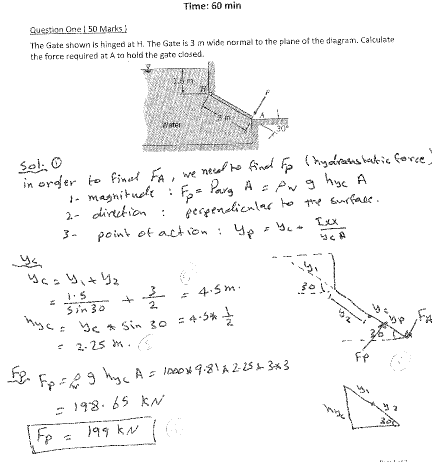


If you choose pounds (weight), feet (length), and foot-pounds (torque force) as your units, everything works out nicely. And torque in this situation manifests as a force pushing horizontally. Distance is the distance to the center of mass, which is half of the total distance. We can use weight instead of force because the only force is gravity acting upon the mass-a.k.a. (1/4 the length of the fully extended door) The center of mass is halfway between the two hinges.
 The center of mass is also 90° out from the top hinge (in reality it will be a little lower). The door is at a 90° angle (perfectly horizontal). The greatest forces will occur at the top of the track. So you'll need to restrict the door opening with a stop in the track somewhere to keep things within reason. If the door is open 89 degrees, then the force at R is 57/2 W. If the door is fully open, tan(90) -> infinity and the universe ends. Sum Torque = 0 -> (L/2 sin(theta) * 2 W)(clockwise+) - R 2L cos(theta)(counterclockwise, -ve)Ĭonsider the results - if the door is closed, theta is zero and tan(theta) is zero. Take the sum of the torques about P (hinge pin at top) The forces P and T disappear as the moment arm is zero. The X component of the length will be L sin( theta). Thus, when the door is closed, theta is 0, and when open all the way (impossible in real life) theta is 90Ĭonstraint: The door will form an isosceles triangle at all times when closing. Let Theta be the angle between vertical, and the upper portion, measured from the opening. Assume: The two halves of the door are of equal length and weight.
The center of mass is also 90° out from the top hinge (in reality it will be a little lower). The door is at a 90° angle (perfectly horizontal). The greatest forces will occur at the top of the track. So you'll need to restrict the door opening with a stop in the track somewhere to keep things within reason. If the door is open 89 degrees, then the force at R is 57/2 W. If the door is fully open, tan(90) -> infinity and the universe ends. Sum Torque = 0 -> (L/2 sin(theta) * 2 W)(clockwise+) - R 2L cos(theta)(counterclockwise, -ve)Ĭonsider the results - if the door is closed, theta is zero and tan(theta) is zero. Take the sum of the torques about P (hinge pin at top) The forces P and T disappear as the moment arm is zero. The X component of the length will be L sin( theta). Thus, when the door is closed, theta is 0, and when open all the way (impossible in real life) theta is 90Ĭonstraint: The door will form an isosceles triangle at all times when closing. Let Theta be the angle between vertical, and the upper portion, measured from the opening. Assume: The two halves of the door are of equal length and weight.







 0 kommentar(er)
0 kommentar(er)
